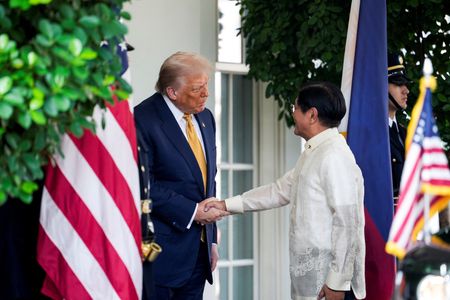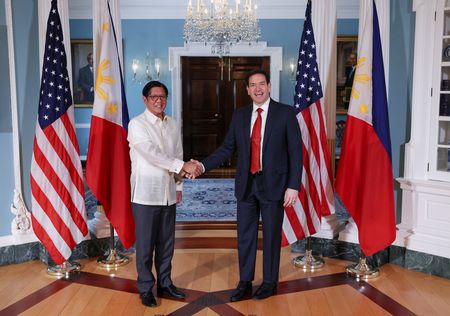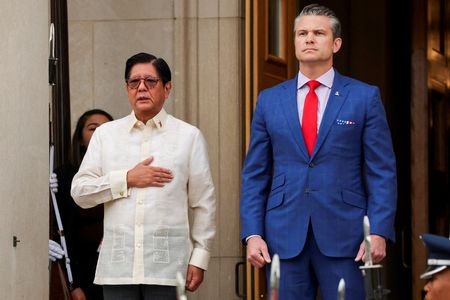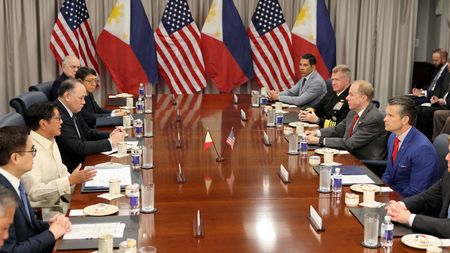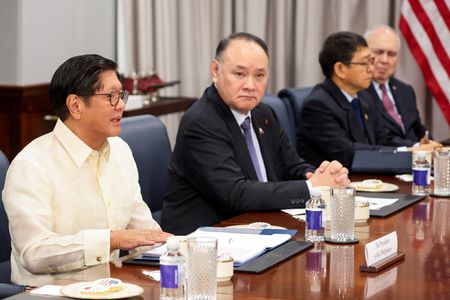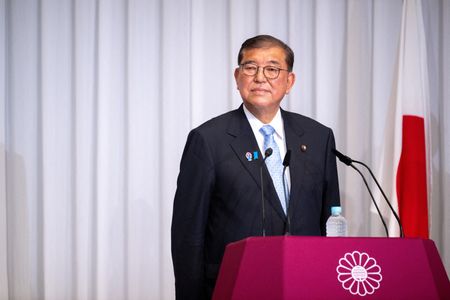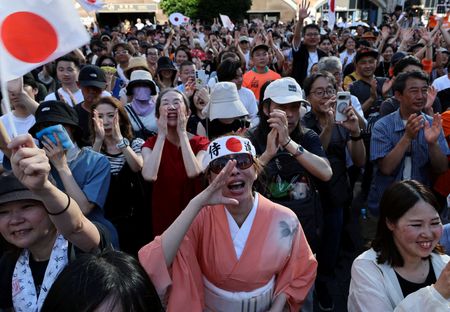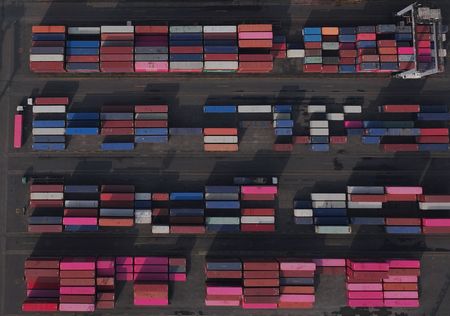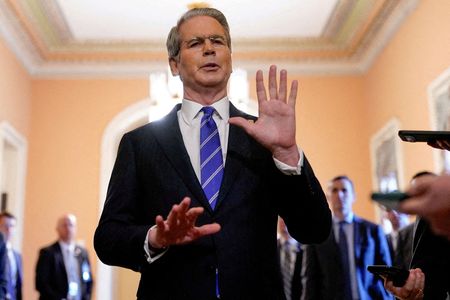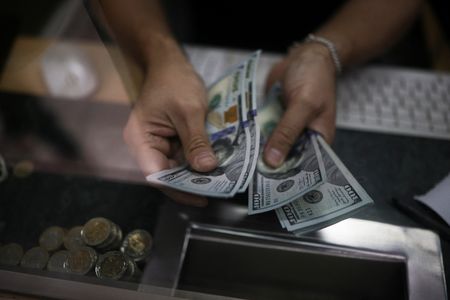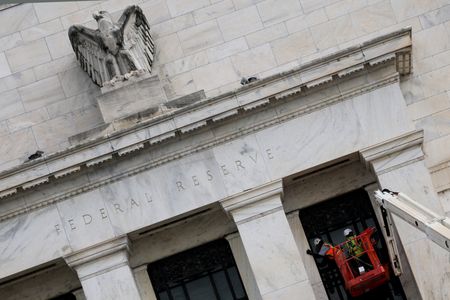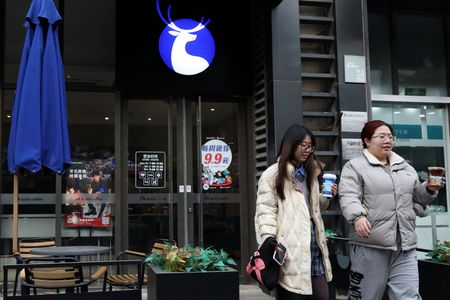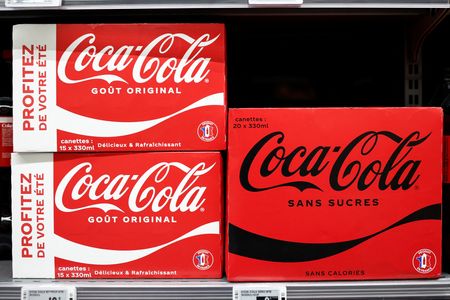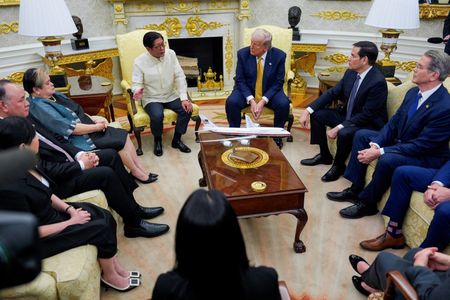By David Brunnstrom and Karen Lema
WASHINGTON/MANILA (Reuters) -Philippine President Ferdinand Marcos Jr. will meet U.S. President Donald Trump this week, hoping Manila’s status as a key Asian ally will secure a more favorable trade deal before an August 1 deadline.
Marcos will see Trump at the White House on Tuesday, the first Southeast Asian leader to meet him in his second term. Trump has already struck trade deals with two of Manila’s regional partners, Vietnam and Indonesia, but had been driving tough bargains in talks even with close allies Washington needs to keep onside in its strategic rivalry with China.
“I expect our discussions to focus on security and defense, of course, but also on trade,” Marcos said before leaving Manila. “We will see how much progress we can make when it comes to the negotiations with the United States concerning the changes that we would like to institute to alleviate the effects of a very severe tariff schedule on the Philippines.”
The United States had a deficit of nearly $5 billion with the Philippines last year on bilateral goods trade of $23.5 billion. Trump this month raised the threatened “reciprocal” tariffs on Philippine imports to 20% from 17% threatened in April.
Although U.S. allies in Asia such as Japan and South Korea have yet to strike trade deals with Trump, Gregory Poling, a Southeast Asia expert at Washington’s Center for Strategic and International Studies, said Marcos might be able to do better than Vietnam, with its agreement of a 20% baseline tariff on its goods, and Indonesia at 19%.
“I wouldn’t be surprised to see an announcement of a deal with the Philippines at a lower rate than those two,” he said, noting it is a treaty ally closely aligned with the U.S. on China.
Marcos, who arrived in Washington on Sunday, went to the Pentagon on Monday for talks with Defense Secretary Pete Hegseth and later met with Secretary of State Marco Rubio. During his trip, he will also meet U.S. business leaders investing in the Philippines.
‘MUTUALLY BENEFICIAL’ DEAL
Philippine officials say Marcos will stress that Manila must become economically stronger if it is to serve as a truly robust U.S. partner in the Indo-Pacific.
Philippine Assistant Foreign Secretary Raquel Solano said last week trade officials have been working with U.S. counterparts seeking to seal a “mutually acceptable and mutually beneficial” deal.
Solano said the Philippine president would be looking to further strengthen their seven-decade-old defense alliance.
At the Pentagon, Marcos called the mutual defense treaty between the countries the “cornerstone” of the bilateral relationship and said the alliance was helping preserve stability in the South China Sea.
“I thank yourself and the United States government and President Trump for the continuing support that we feel – and that we need – in the face of the threats that we, our country, is facing,” Marcos said.
Hegseth noted deepening military cooperation with Manila, including the deployment of missiles and unmanned systems.
“Together, we must forge a strong shield of real deterrence for peace,” said Hegseth, who visited Manila in March.
With the Philippines facing intense pressure from China in the contested South China Sea, Marcos has pivoted closer to the U.S., expanding access to Philippine military bases amid China’s threats towards Taiwan, the democratically governed island claimed by Beijing.
The United States and the Philippines hold dozens of annual exercises, which have included training with the U.S. Typhon missile system, and more recently with the NMESIS anti-ship missile system, angering China.
Poling said it was notable that Rubio and Hegseth made sure their Philippine counterparts were the first Southeast Asian officials they met.
He said Trump also seemed to have a certain warmth towards Marcos, based on their phone call after Trump’s reelection.
(Reporting by David Brunnstrom in Washington and Karen Lema in Manila; additional reporting by Phil Stewart; Editing by William Mallard, Rod Nickel)

